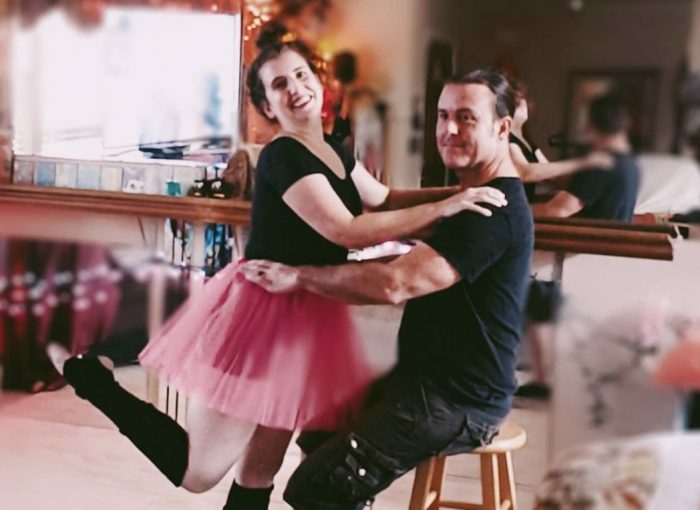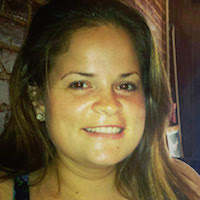Check out the first part of this two-part interview to hear more about Debbie’s journey out of BPD hell.
In this interview, we continue our conversation with Debbie DeMarco Bennett to discuss her recovery from borderline personality disorder (BPD), the stigma, being diagnosed with multiple sclerosis, and learning to move forward against seemingly insurmountable odds.
Debbie is an advocate on behalf of the BPD community as well as a published author and blogger on the same topic.
Through vigorous effort, willingness, and the help of Dialectical Behavior Therapy (DBT), the premier treatment for BPD, she went into recovery. Armed with these skills, she now co-facilitates an online DBT group teaching these tools to students from around the world.
Here is part two of the interview:
Alyssa: BPD tends to have a bad rap even among medical professionals. To what extent is there validity to the stigma?
Debbie: People with BPD, especially untreated, are deeply hurting. The behaviors that give them a bad rap are often the things they want to shift, but they don’t know, how. In the meantime, they are trying to get their needs met in the ways they’ve learned to cope and react. Even though these behaviors (which can include things like exaggerating, lying, anger outbursts, threatening, or acting out self-harm) cause them additional problems and pain, they’ve learned that the behaviors work—at least, to a degree—which is why they do them.
It’s so important that professionals choose to take a step back and view their perceptions of a person with BPD through a lens of compassion that takes this into consideration. In DBT (Dialectical Behavior Therapy), there is an understanding that everyone is doing their best, given their history, the coping tools they have (or don’t), and their current circumstances. There’s also the dialectic that when we know better, we do better. Patience, support, guidance, and understanding from professionals are needed, as well as clear boundaries and their own self-care.
While it’s true that working with people who have BPD can take a lot more energy than some other clients, witnessing the shifts and transformation of what’s possible for someone with this condition if given a chance is truly rewarding.
Alyssa: A few years after going into recovery from BPD, you were diagnosed with multiple sclerosis. What was going through your mind at that moment?
Debbie: I’ll tell you this: despite being frightened to learn I have a potentially debilitating disease, I felt a sense of calm and acceptance that I know was only made possible because of the strides I’d made with emotion regulation through learning and integrating DBT skills into my life.
It kind of reminds me of when I tried to attend a trauma recovery group before learning DBT. I had a mini nervous breakdown, as I didn’t have the tools to help me manage and cope with the intense emotions that arose. After learning DBT, I tried the trauma recovery group again, made great progress, and graduated from the group.
When I received my multiple sclerosis diagnosis, I had already learned DBT and was using many skills to cope with the invasive medical and diagnostic procedures that led to my diagnosis. I used coping ahead for those appointments, mindfulness skills while at the appointments, distress tolerance skills like self-soothing and distracting between appointments, and interpersonal effectiveness to clearly communicate my thoughts, concerns, needs, and questions to medical staff.
Alyssa: Tell us about your life as an MS warrior and a beginner ballerina. How did you pick ballet, and what have you gained from this form of dance?
Debbie: I’ve always wanted to learn how to dance. It’s not something that has never come naturally to me (like writing or singing have), but nonetheless, I wanted to learn.
For the first few years that I had multiple sclerosis, I was quite sedentary and gained quite a bit of weight. I was easily tired and was afraid of losing my balance, falling, and perhaps having this happen when no one else was around.
When I met my now-husband in 2017, he opened up my world. Although he also suffers from a medical disability that impairs his walking, he and I began to do physical things together, honoring our bodies but also pushing them. We went rock climbing, cycling, dancing, bowling—all kinds of things.
I realized I could trust my body. I also talked to my neurologist about safety precautions…I was scared. I felt like a clutz and had some issues with balance and strength. For some reason, this only pushed me to want to challenge myself with this art form.
Ballet at the barre is great for my well-being, from practicing balance and strength to improve my MS symptoms to learning grace, experiencing repetition and soothing piano music, and being in community with others. Center work, away from the barre, still remains a challenge. Sometimes I have cogfog (a common MS symptom that feels like a cognitive fog) and have trouble translating what I’m seeing or being asked to do with my own body. Other times, I just get it.
Ballet is such a challenging art form. Even though I have now been studying it for one and a half years at this point, I still much consider myself a beginner. And, ballet has prompted me to use DBT skills many times—especially when I find myself in self-judgment or anxious about doing things properly. This discipline really is helping me heal my mind-body-spirit.
Alyssa: You are no stranger to adversity, having been diagnosed with BPD and multiple sclerosis. As you know, 2020 has been an incredibly difficult year for many Americans and people around the world. Mental health issues are on the rise, drug overdoses, suicide. How do you keep these challenges from breaking you? How can we not only survive but, perhaps, even use them as a springboard to thrive? Is that even possible?
Debbie: You’re right. I’ve personally experienced quite a bit of personal adversity. It’s important to note (for myself, too) that I’ve also personally experienced quite a bit of personal resilience and overcoming. My hope is that those who are struggling right now with the added complexities of the pandemic will also choose to recount times when they have chosen to push through and overcome and to remember that they can now, too. That evidence can reassure our nervous systems that help is on the way and that this situation will not last forever.
Initially, when we’re in a crisis, we can’t even access the type of thinking that would consider thriving from it a possibility. We’re in survival mode. But once we begin to feel safe, we can begin to access that inner wisdom that says, “Something is going to come out of this,” and even, possibly, “how can I use this to help others?” That’s been my personal experience.
~
When I think of stories that speak to the perseverance of the human spirit, Debbie is one of them.
I am reminded of the following words by Viktor Frankl, a holocaust survivor, and creator of logotherapy, “Between stimulus and response, there is a space. In that space, is our power to choose our response. In our response, lies our growth and our freedom.”
In these words, we are reminded of our innate power, the capability to push forward, that within a mindful gap between event and response, lies the universe; that within painful circumstances, there is always the potential for empowerment vis-a-vis the decision to continue onward and upward.
~











Read 0 comments and reply